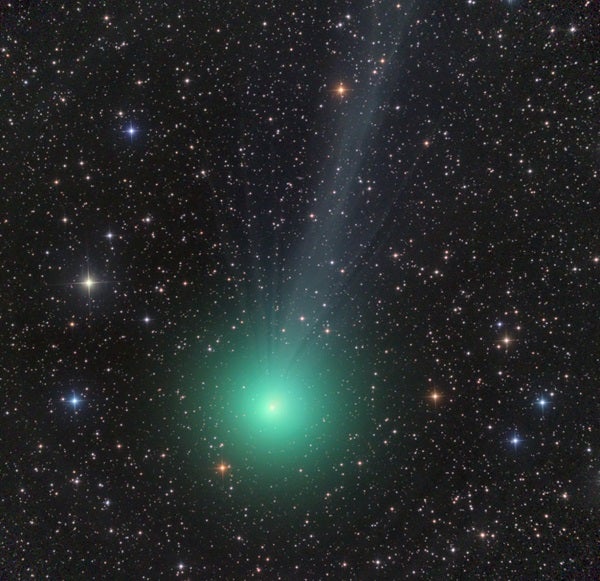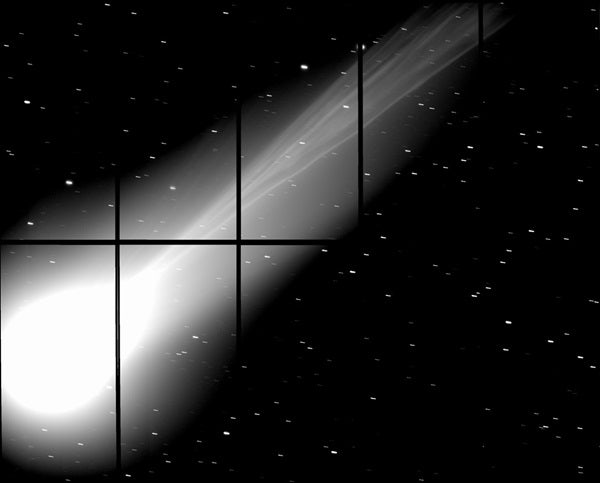Currently glowing at 5th magnitude, Comet Lovejoy lies in Lepus the Hare, which hangs low in the southern sky from mid-northern latitudes around midnight local time. By the new year, it will remain an easy small-telescope and binocular target as it traverses the small constellation.
Lovejoy makes its closest approach to Earth (some 44 million miles away) in early January, and the result is that it races across our sky. The comet covers 3° per day at its peak. This means it will move noticeably in a single observing session.
Amateur astronomer Terry Lovejoy discovered this object August 17, 2014, from Brisbane, Australia. Comets that first light up the deep southern sky tend to have orbits inclined steeply to the solar system’s plane, a characteristic that often carries them well north after they wheel around the Sun. That’s the case with C/2014 Q2 — Lovejoy’s fifth discovery — as it was with his fourth, C/2013 R1. Both the latter comet and Lovejoy’s most famous find, sungrazer C/2011 W3, reached naked-eye visibility. Although this latest Comet Lovejoy won’t be as bright, it still will be fun to follow.











